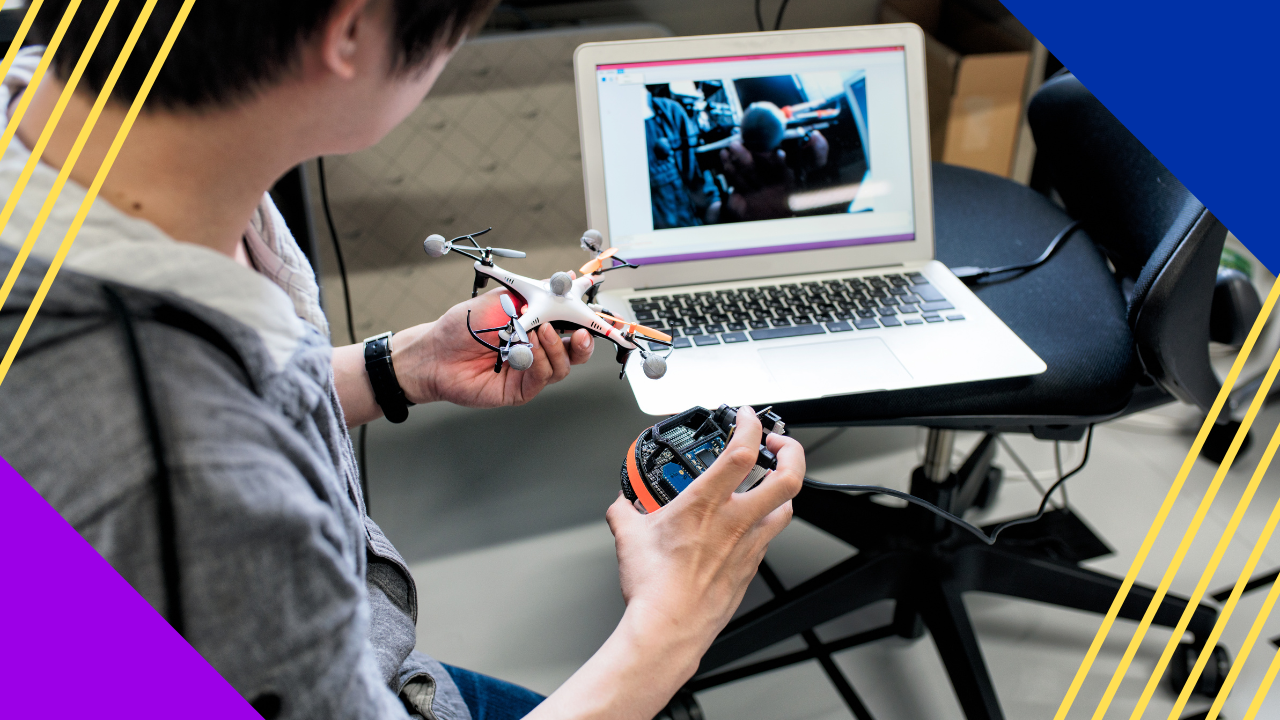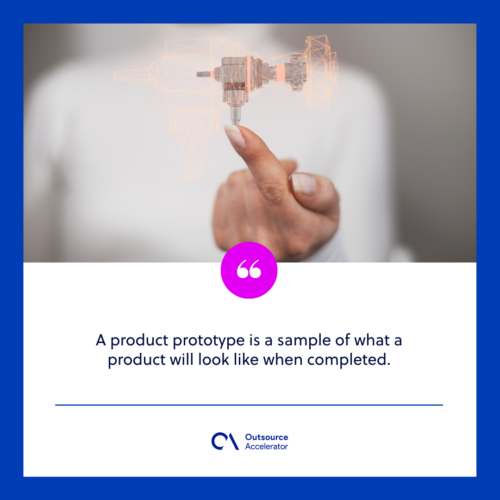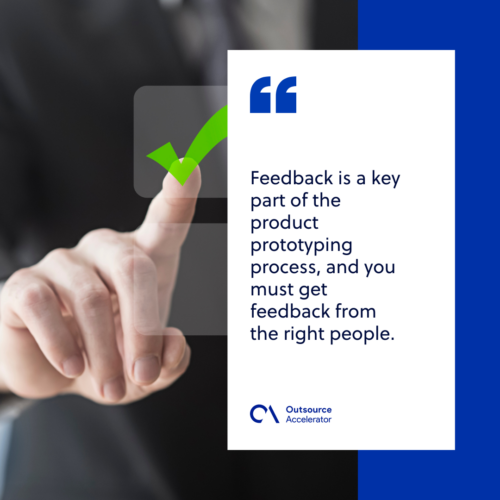A quick guide to product prototyping

It takes a long process for products and services to go from a developer’s mind to the user’s hand. Product prototyping is part of this extensive process, creating a workable “first version” of the product.
Though they’re not physically built, software applications still require testing[1] of usability and interactivity. They also go through the product prototyping process.
What is a product prototype?
A product prototype is a sample of what a product will look like when completed. It allows developers to test their ideas early, saving time and money in the long run.
The prototype helps determine the design specifications and details before mass production. Prototyping is also used to test and improve designs[2] before final production.
Software prototyping does the same, helping determine how software should be built. Many types of software, such as websites or mobile apps, require multiple iterations before they are completed.
Prototyping is a crucial phase in the product development process, providing a bridge between a product idea and its final product. It allows designers and engineers to create high fidelity user prototypes that closely resemble the final product in terms of look, feel, and functionality.
This step is essential for validating design concepts, identifying potential issues, and refining the product before it moves into mass production.

Steps in product prototyping
There are multiple ways to build a product prototype. Developers will go with what works best for their process, whether through rough sketches or straight-to-code.
Here are common steps developers take when product prototyping:
Define the problem
Before building a product prototype, you should clearly understand the problem you are trying to solve. This ensures that you can design a testable solution and that it is something your users need.
Defining the problem includes the scope and parameters of your project, including your target audience and how they differ from each other. Identifying your target market entails – who will use it, how they will use it, and what they want to get out of it.
Incorporating project management software during the prototyping phase can greatly enhance efficiency and collaboration. This software helps ensure that all aspects of the prototype creation process are aligned and on schedule.
Conduct customer research
Customer research is about understanding people’s wants, preferences about current products, and what they need. It’s about learning from others to create something better for them.
You can conduct customer research through surveys, interviews, focus groups, or usability tests. All companies have different resources available to them, so use the method that works best for you.
Create a detailed diagram or sketch
The best way to start a software product prototype or application is by creating a detailed diagram or sketch. It may be a flowchart, UML diagram, or other visual representation of how the software will work.
The diagram or sketch should consist of every aspect of the product that you want to test or verify. You can also have sketches or diagrams of any physical parts you plan to use with the final product prototype.
This initial design should include an overview of the application and its various screens. You should also include any data flow diagrams (DFD) or diagrams you created during your requirements analysis phase.
Create a proof of concept
A proof of concept is a small-scale experiment that helps you test a hypothesis before building a product. When you create a proof of concept, you make the backbone for the rest of your software development process.
It’s not a product prototype yet, but it can be used to generate ideas and determine which features will work best. This can be created quickly and is often done by hand instead of in code.
It’s important to note that software product prototyping is often mocked up with code, while proofs of concept are not.
Part of this is the creation of feasibility prototypes. These are preliminary models used to test whether the basic concept of the product idea is viable.
Feasibility prototypes are not concerned with aesthetics or detailed features; instead, they focus on the core functionality and technical feasibility of the product.
Build an interactive prototype
In this stage, you create a clickable product prototype that can be tested. This is also known as an interactive prototype or a low-fidelity prototype. Simple graphics and text links will simulate how the application will work when built.
Your main objective is to demonstrate functionality to the user. Many product prototyping tools, such as Invision and Marvel App, are freely available for software.
Creating a physical product prototype is often necessary for products that have tangible components.
Gather feedback
Feedback is a key part of the product prototyping process, and you must get feedback from the right people.
Feedback from stakeholders provides insight into how users will react to your design, but getting feedback from your target audience is also essential.
Gather feedback early and often. The sooner you get feedback on your product prototype, the better off you’ll be when it comes to full-scale production and launching.

The advantage of a product prototype
A product prototype allows testing and feedback with real users before entering production.
Prototyping enables designers to experiment with ideas and discover whether they work before investing resources.
Through product prototyping, ideas can be refined and made to adapt to situations that not even the designers had initially thought of.
The mind of a customer can offer unique insights into a product. Any features that don’t make the cut for a product can be saved as ideas for future iterations. The advantage is that they don’t have to be tested from scratch.
Feedback from the product prototype will also give you a greater insight into your customers’ needs. This information can be used to develop a current product and other services of your company.
Product prototyping gives your ideas that extra layer of polish and professional sheen they need to stand out in today’s competitive consumer marketplace. Ideas are thrown around all the time, but making them work is where the best companies thrive.
References
- Software applications still require testing. Jamil, M.A., Arif, M., Abubakar, N.S.A. and Ahmad, A., 2016, November. Software testing techniques: A literature review. In 2016 6th international conference on information and communication technology for the Muslim world (ICT4M) (pp. 177-182). IEEE.
- Test and improve designs. Camburn, B., Viswanathan, V., Linsey, J., Anderson, D., Jensen, D., Crawford, R., Otto, K. and Wood, K., 2017. Design prototyping methods: state of the art in strategies, techniques, and guidelines. Design Science, 3.







 Independent
Independent




